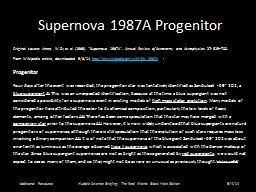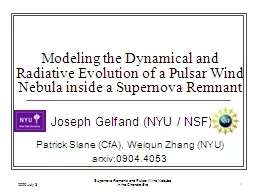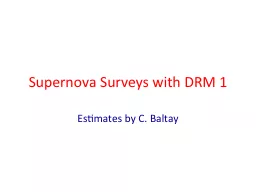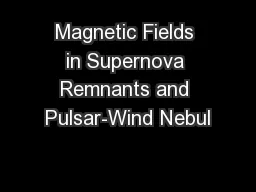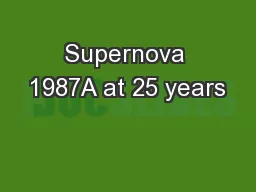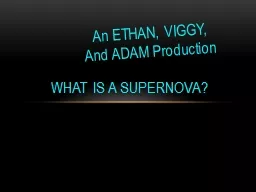PPT-Supernova 1987A Progenitor
Author : faustina-dinatale | Published Date : 2016-06-23
Original source Arnett WD et al 1989 Supernova 1987A Annual Review of Astronomy and Astrophysics 27 629700 From Wikipedia article downloaded 9814 http enwikipediaorgwikiSN1987A
Presentation Embed Code
Download Presentation
Download Presentation The PPT/PDF document "Supernova 1987A Progenitor" is the property of its rightful owner. Permission is granted to download and print the materials on this website for personal, non-commercial use only, and to display it on your personal computer provided you do not modify the materials and that you retain all copyright notices contained in the materials. By downloading content from our website, you accept the terms of this agreement.
Supernova 1987A Progenitor: Transcript
Download Rules Of Document
"Supernova 1987A Progenitor"The content belongs to its owner. You may download and print it for personal use, without modification, and keep all copyright notices. By downloading, you agree to these terms.
Related Documents

